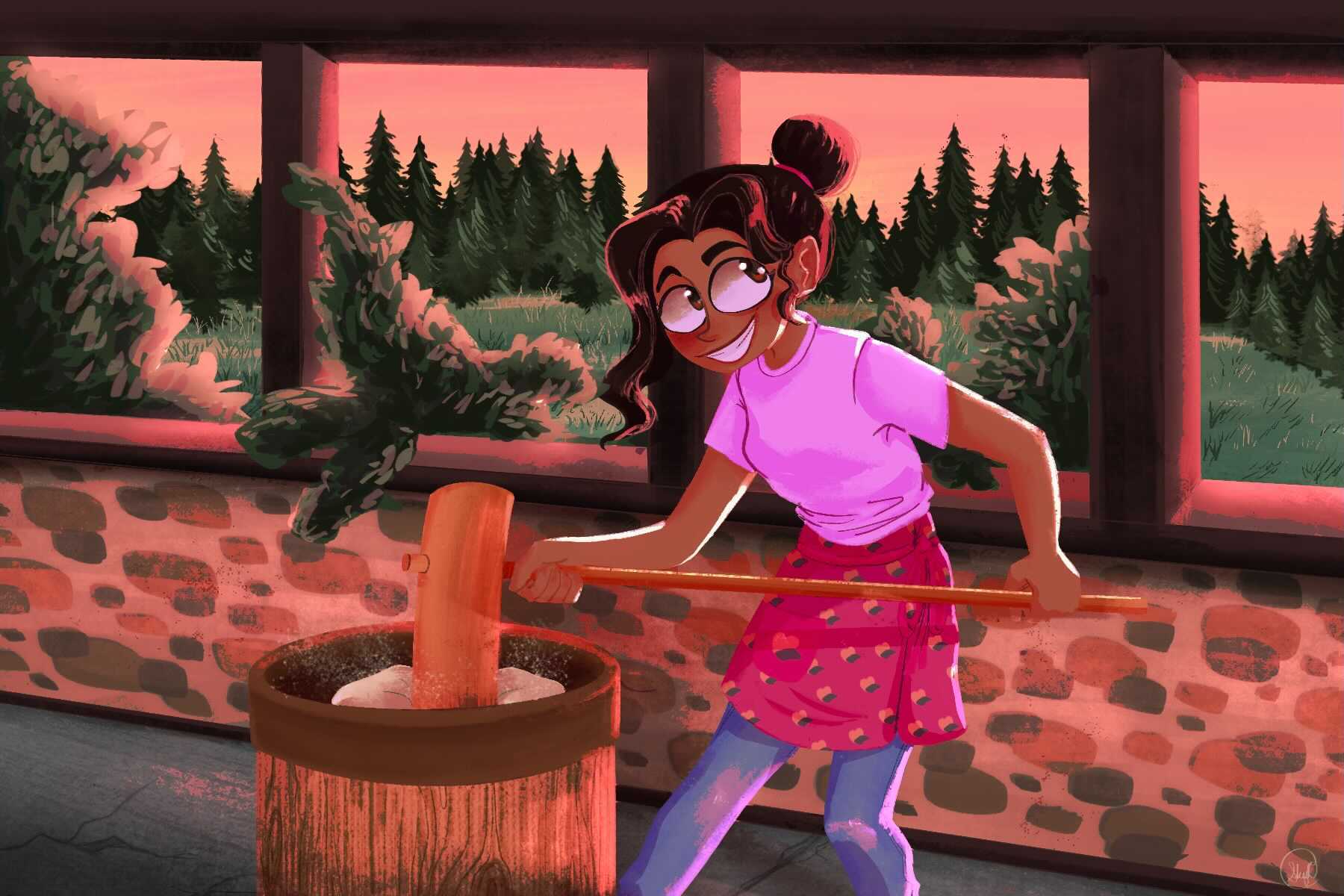Mochi — the little balls promising deliciousness with the smallest bite. While they taste delicious and offer many different flavors, their significance and history are even more valuable than the savory goodness they leave on our taste buds. Mochi has picked up traction in recent years due to the sheer number of TikTok videos that show people trying the treat or otherwise offer tutorials on how to make them. While these videos are fun and give you an idea for your next DIY, they give only a small glimpse into the significance of mochi in Japanese culture.
Traditionally, mochi is a delicacy enjoyed on Japanese New Year, as they are believed to be a symbol of good luck and offer strength to get through the cold months ahead. Relle, a popular cuisine blogger from Hawaii, shared that mochi is also believed to symbolize prosperity, health and happiness for the upcoming year. Mochi is a large part of the Shinto religion, where it is commonly used as offerings for the gods during religious rituals. While there are many variations, mochi used for offerings on Japanese New Year will always be white rice shaped into small disks instead of the other commonly round shape.
This tradition has lasted centuries and the practice of homemaking them is something valuable and rare nowadays and definitely isn’t as easy as the TikTok videos may make it seem. Mochi is an interesting food; there are many different types, but one thing that remains consistent is the yummy rice base created with several hours of preparation. The mochi eaten on New Year’s is typically enjoyed in an ozoni soup, served with vegetables, seaweed and condiments for dipping, like soy sauce. Other types may be filled with red bean paste, peanut butter, matcha and more.
Mochi will typically always have the same base: mochigome, short-grain glutinous rice, and the filling depends on what kind of mochi one is eating. There are some, like traditional mochi, meant to be enjoyed with soup and vegetables, and then there are others that can be enjoyed as a snack. In recent years, you may have noticed certain grocery stores have begun carrying brands like My Mochi in the freezer aisle — this is mochi ice cream, a fairly new creation (at least compared to the original centuries-old recipe!) that was only just released in 1993. It was invented by American businesswoman and activist Frances Hashimoto and is a twist on the original mochi recipe, offering ice cream flavors like vanilla, chocolate, strawberry, matcha and more, depending on the brand.
The original way of preparing mochi requires a lot of work. When mochi was featured on “Dash and Lily,” a recent 2020 Netflix original TV show, viewers saw Dash, played by Austin Abrams, struggle to make it. He becomes frustrated while those who sit with him replicate his actions and create them seamlessly. The little clip in the show is a fair representation of the mochi-making process; it isn’t easy, which makes the treat all the more special. Though mochi is still a dish steeped in tradition, the methods of making it have shifted in modern times. Now the work has been passed off to machines in mass manufacturing plants to keep up with the high demand, especially close to the beginning of the new year. However, the original charm and patience ingrained in handmade mochi still thrive today in a small shop in Little Tokyo, Los Angeles.
Fugetsu-Do, a mochi shop in Little Tokyo, is one of the last places to handmake the treat in stores. Opened in 1903 and passed down through four generations, it remains open and is going strong, celebrating the family values of hard work, love and, of course, tradition. A YouTube video posted by Buzzfeed Bring Me explores the way they’ve managed to keep the magic for so long.
Recorded in 2019, Sean Miura interviewed the owner, Brian Kito, who explained the intense labor of love that the shop is to him and his family. Since the age of 18, he has worked in the shop, which has run seven days out of the week to keep up with the demand. Before that, he practiced mochi with his father, as his father did with his grandfather before him.
Mochi making is a skill that requires a lot of patience and time, but all the while, it helps develop stronger ties to family. Kito’s son, Korey, has plans to take over the shop after his father retires. He has been practicing since he was young, as have all the generations in the Kito clan. The hard work and dedication seen in Fugetsu-Do reflects the history and impact that mochi has within Japanese culture — family and tradition are tied into having good luck, no?
To make mochi, one must prepare the glutinous rice by soaking it, which does take some time — about three hours or so. After being soaked, it is steamed, water is added and finally, it is kneaded! After that, the dough is added to potato starch, where it can then start being molded with. The end goal is a little dumpling, with a perfect layer of mochi around the middle and a thin paste covering it. One of the most important things is to make it perfectly round; the seal of the dough should be perfect, leaving the creases that close around the filling invisible. If you do decide to make it, don’t fret if it’s not perfect! It takes an intense amount of practice to get everything right; it is definitely not an activity for those with little patience. The discipline required to make it makes the treat all the more rewarding.
While there are many variations and changes in the recipe, mochi will always be bound with family, love, tradition and well wishes for all those who enjoy them.

















